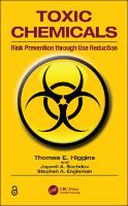Explore

Toxic Chemicals
0 Ungluers have
Faved this Work
Login to Fave
Catastrophic events such as the Bhopal, India tragedy and rising incidences of cancer in areas neighboring industrial facilities have heightened concern over the use of toxic chemicals in manufacturing and industry, particularly with respect to long-term exposure. While legislation and publicity have reduced the use of some chemicals, risks remain that continue to threaten the health of individuals worldwide. Based on the authors’ research conducted through their development of a program in Sao Paulo, Brazil, Toxic Chemicals: Risk Prevention Through Use Reduction examines various toxicity factors and proposes a plan to reduce the toxic impact of these hazardous substances. Explores all factors that contribute to toxicity The book begins by exploring the history of toxic chemical release reporting programs, a trend growing out of the Bhopal tragedy. It surveys their impact both in the United States through the Toxics Release Inventory (TRI) program and in the 29 other countries that maintain similar programs. Then, with the goal of developing a rational method of prioritizing toxic chemicals for reduction, the authors discuss mobility, persistence, and bioconcentration adjustment factors and present a method for integrating all of these factors to estimate the relative impact of chemical release. Compares alternate emphases in existing programs The book describes programs that concentrate on reducing the release of chemicals with the greatest adverse toxic impact and those that require companies to prepare pollution prevention plans and set goals for reducing use or release. It also examines technical assistance programs that help companies search for alternative chemicals to use or process changes that eliminate the use of toxic chemicals. In addition, it explores alternative market-based approaches for achieving environmental protection. Presents a workable plan for the future In the final chapters, the authors lay out their proposed program for reducing the use of toxic chemicals. This plan builds on the existing TRI program and uses lessons learned from this and other programs. The combined research assembled by the authors and their multifaceted approach to the issue of chemical toxicity enables companies and policy makers to move to the next level of toxic chemical use reduction, resulting in a safer environment for future generations.
Why read this book? Have your say.
You must be logged in to comment.
Rights Information
Are you the author or publisher of this work? If so, you can claim it as yours by registering as an Unglue.it rights holder.Downloads
This work has been downloaded 172 times via unglue.it ebook links.
- 172 - pdf (CC BY-NC-ND) at OAPEN Library.
Keywords
- Accidents
- Chemical industry
- chemicals
- Government policy
- Hazardous wastes
- Industrial toxicology
- Law / Environmental
- Management
- Prevention
- Risk
- Science / Environmental Science
- TECHNOLOGY & ENGINEERING / Manufacturing
- Toxic Chemicals
- Waste minimization
Editions

